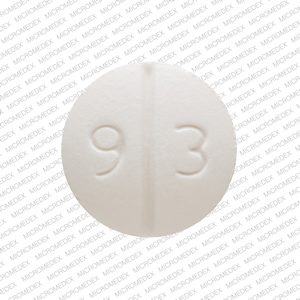Trimethoprim Disease Interactions
There are 3 disease interactions with trimethoprim.
Trimethoprim (applies to trimethoprim) folate deficiency
Major Potential Hazard, High plausibility. Applicable conditions: Anemia Associated with Folate Deficiency, Folic Acid/Cyanocobalamin Deficiency, Renal Dysfunction, Hemolytic Anemia, Alcoholism, Malnourished
The use of trimethoprim is contraindicated in patients with documented megaloblastic anemia due to folate deficiency. Trimethoprim inhibits dihydrofolate reductase, an enzyme necessary in the synthesis of tetrahydrofolic acid, or the metabolically active form of folic acid. Thrombocytopenia, neutropenia, megaloblastic anemia, and methemoglobinemia have been reported rarely. However, the risk is increased in the presence of folate deficiency, chronic hemolytic anemia and/or renal impairment, as well as during prolonged therapy (e.g., > 6 months) with high dosages. Therapy with trimethoprim should be administered cautiously under these conditions and in patients with suspected folate depletion (e.g., elderly, alcoholic, malnourished or debilitated patients). Folic acid supplementation, if necessary, may be administered concomitantly without interfering with the antibacterial action of trimethoprim. Patients should be instructed to immediately report any signs or symptoms suggestive of hematologic toxicity such as fever, sore throat, local infection, bleeding, pallor, dizziness, or jaundice. Leucovorin (folinic acid) should be administered if bone marrow depression is detected.
Trimethoprim (applies to trimethoprim) dialysis
Moderate Potential Hazard, High plausibility. Applicable conditions: hemodialysis
Trimethoprim is moderately removed by hemodialysis. Doses should either be scheduled for administration after dialysis or supplemental doses be given after dialysis.
Trimethoprim (applies to trimethoprim) renal dysfunction
Moderate Potential Hazard, High plausibility.
Trimethoprim is primarily eliminated by the kidney. The serum concentration of trimethoprim may be increased and the half-life prolonged in patients with impaired renal function. Dosage adjustments may be necessary and modifications should be based on the degree of renal impairment as well as severity of infection. The manufacturers recommend a dosage of 50 mg every 12 hours in patients with creatinine clearance between 15 to 30 mL/min and not using the drug in patients with creatinine clearance below 15 mL/min.
Switch to professional interaction data
Trimethoprim drug interactions
There are 163 drug interactions with trimethoprim.
More about trimethoprim
- trimethoprim consumer information
- Check interactions
- Compare alternatives
- Pricing & coupons
- Reviews (197)
- Drug images
- Side effects
- Dosage information
- During pregnancy
- Support group
- Drug class: urinary anti-infectives
- Breastfeeding
- En español
Related treatment guides
Drug Interaction Classification
| Highly clinically significant. Avoid combinations; the risk of the interaction outweighs the benefit. | |
| Moderately clinically significant. Usually avoid combinations; use it only under special circumstances. | |
| Minimally clinically significant. Minimize risk; assess risk and consider an alternative drug, take steps to circumvent the interaction risk and/or institute a monitoring plan. | |
| No interaction information available. |
See also:
Further information
Always consult your healthcare provider to ensure the information displayed on this page applies to your personal circumstances.


